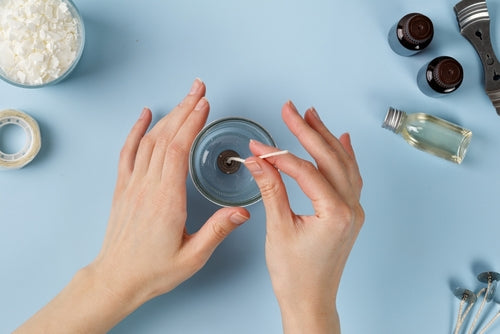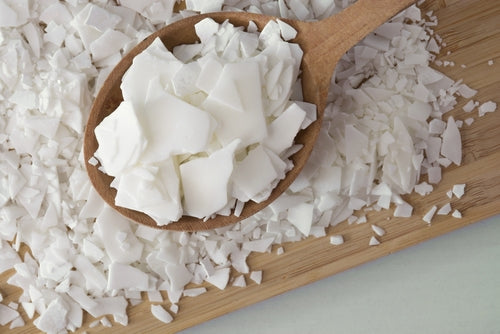Candle making is a rewarding craft, but like any creative endeavor, it can sometimes present challenges. Don't worry; many common issues in candle making are easily solvable with a bit of troubleshooting. Here are some common problems you might encounter and how to address them:
1. Uneven Surface or Tunneling:
- Issue: Your candle burns down the center, leaving a tunnel of wax around the wick.
- Solution: Ensure that you allow your candle to burn until the entire top layer of wax melts during the first burn. This establishes a "memory burn" and prevents tunneling in future burns. Use the right-sized wick for your container, as a wick that's too small can cause tunneling.
2. Cracking or Air Bubbles:
- Issue: Small cracks or air bubbles appear on the surface of your candle.
- Solution: Pour your wax at a slightly higher temperature to reduce the chances of bubbles forming. You can also try tapping the mold gently to release air bubbles before the wax cools.
3. Frosting:
- Issue: Your candle's surface appears frosted or has a white, powdery coating.
- Solution: Frosting is a natural occurrence in soy wax candles and doesn't affect their quality. To minimize it, pour your wax at a slightly higher temperature, and avoid rapid cooling.
4. Sinking or Dip in the Center:
- Issue: After your candle has cooled, you notice a depression or dip in the center.
- Solution: This can happen as the candle cools and contracts. To avoid it, you can "top off" your candle with more melted wax when it's partially set but still warm.
5. Wick Issues:
- Issue: Your wick won't stay centered, or it mushrooms excessively.
- Solution: Use wick centering devices or tape to keep the wick in place during cooling. Trim the wick to the appropriate length before lighting to prevent mushrooming.
6. Sooty Flame:
- Issue: Your candle's flame produces excessive soot or black smoke.
- Solution: Trim the wick to the recommended length (usually around 5mm) before lighting. Too long of a wick can cause soot. Ensure proper ventilation, and avoid burning candles in drafty areas.
7. Fragrance Weakness:
- Issue: Your candle's scent isn't as strong as desired.
- Solution: Experiment with different fragrance oils or increase the fragrance oil concentration in your candle recipe. Ensure proper mixing of fragrance oil into the wax before pouring.
8. Cracking When Removing from Mold:
- Issue: Your candle cracks when you try to remove it from the mold.
- Solution: Allow your candle to cool completely in the mold before attempting removal. You can also place the mold briefly in the freezer to make removal easier.
Remember that candle making is an art, and practice makes perfect. Don't be discouraged by initial setbacks. Troubleshooting is part of the learning process, and with each attempt, you'll gain valuable experience and refine your candle-making skills.






